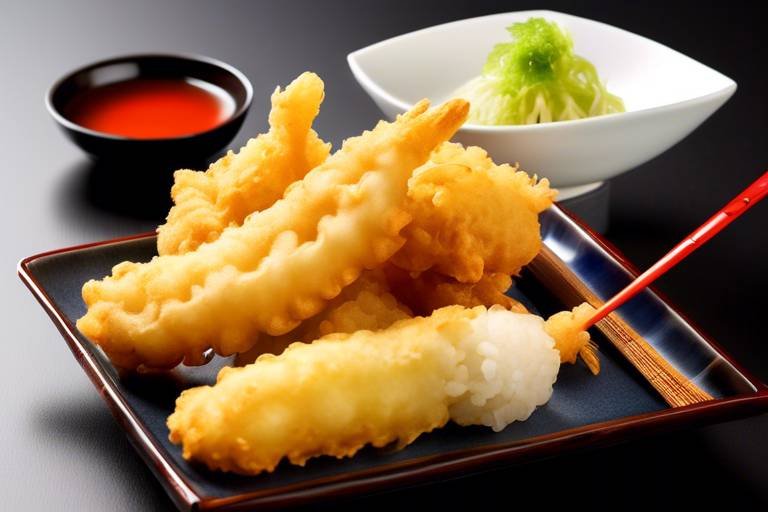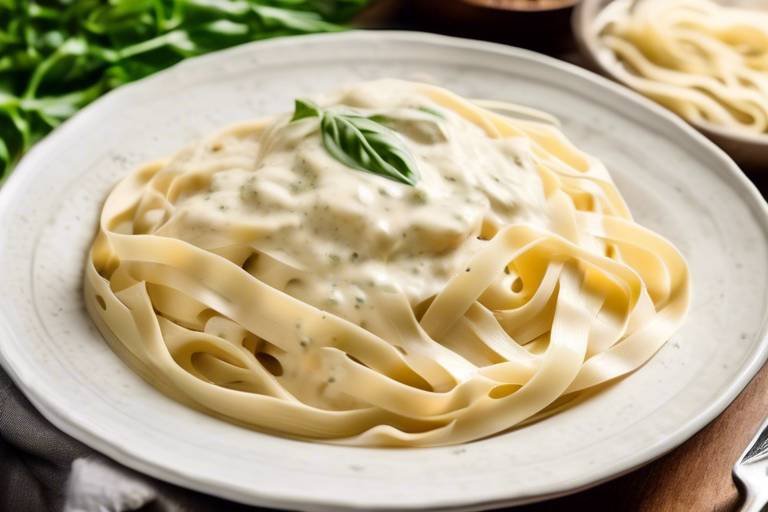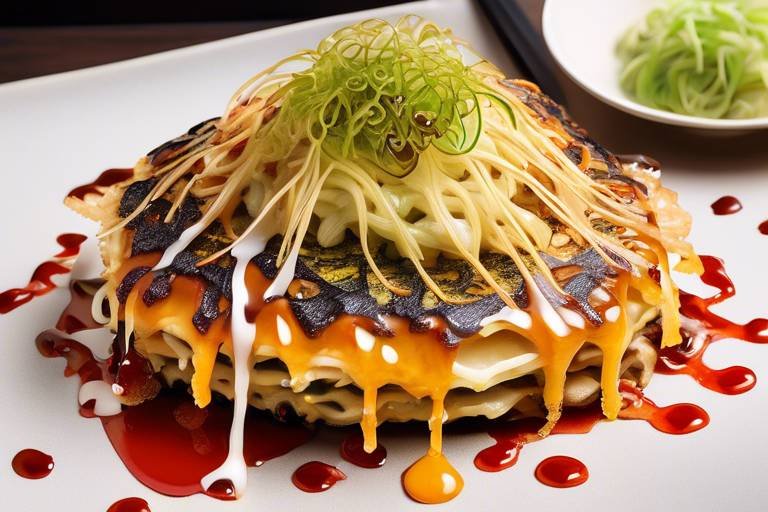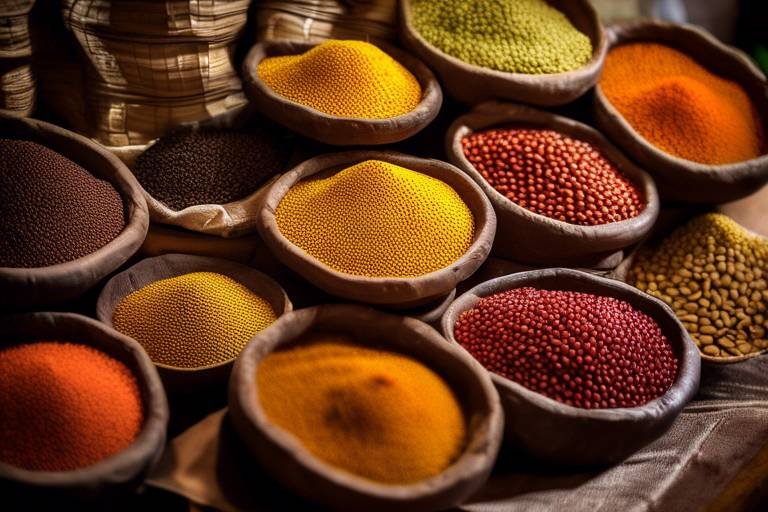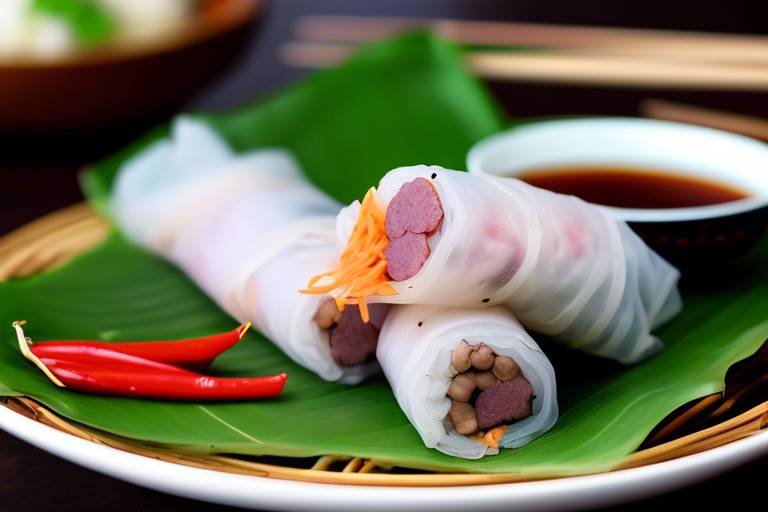Exploring the Rich Flavors of Japanese Ramen
Japanese ramen is a culinary masterpiece that tantalizes taste buds with its rich and diverse flavors. Each bowl of this iconic noodle soup is a work of art, showcasing the meticulous craftsmanship and cultural heritage behind its creation. From the savory broth to the tantalizing toppings, Japanese ramen offers a sensory explosion that takes diners on a flavorful journey through the heart of Japan.
When you delve into the world of Japanese ramen, you are met with a symphony of flavors that vary from region to region. The history of ramen in Japan is a tale of culinary evolution, tracing its roots back to a Chinese import that has now become a national obsession. As you sip the steaming broth and savor the chewy noodles, you can't help but appreciate the artistry and dedication that goes into each bowl of this beloved dish.
Key ingredients play a crucial role in defining the essence of Japanese ramen. The types of noodles, ranging from thin and firm to thick and chewy, each bring a unique texture to the dish. The flavorful broths, whether rich tonkotsu or savory shoyu, form the soul of the ramen bowl, infusing it with depth and complexity. And let's not forget the toppings – tender chashu pork, seasoned eggs, nori – that add layers of flavor and visual appeal to the dish.
As you explore the regional variations of ramen across Japan, you embark on a culinary journey that unveils the diverse styles and specialties that have emerged. From the miso ramen of Sapporo to the tonkotsu ramen of Hakata, each region offers a unique twist on this classic dish. The etiquette and traditions surrounding the enjoyment of ramen add a cultural depth to the experience, enriching the culinary adventure.
But the influence of Japanese ramen extends far beyond the borders of Japan. The global popularity of this noodle soup has sparked a ramen revolution, leading to the emergence of diverse styles and interpretations in different countries. As ramen culture continues to evolve and innovate, it serves as a testament to the universal appeal of this beloved dish.

History of Ramen in Japan
The history of ramen in Japan is a fascinating tale that dates back to the late 19th century. Originally introduced from China, ramen quickly captured the hearts and taste buds of the Japanese people, evolving into a culinary phenomenon. Over the years, ramen has undergone a series of transformations, leading to the creation of diverse regional styles that reflect the unique preferences and traditions of different areas in Japan.
One of the key milestones in the history of ramen in Japan was the post-World War II era, where the dish experienced a surge in popularity due to its affordability and versatility. Ramen shops, known as "ramen-ya," began popping up across the country, serving steaming bowls of noodles in flavorful broths to hungry customers.
The evolution of ramen in Japan also saw the emergence of distinct styles, each with its own characteristics and flavor profiles. From the rich and creamy tonkotsu ramen of Kyushu to the light and delicate shoyu ramen of Tokyo, each region developed its unique take on this beloved dish.
Today, ramen holds a special place in Japanese culinary culture, with ramen shops ranging from humble street stalls to Michelin-starred restaurants. The history of ramen in Japan is a testament to the country's culinary creativity and innovation, showcasing the artistry and craftsmanship that goes into every bowl of this iconic noodle soup.
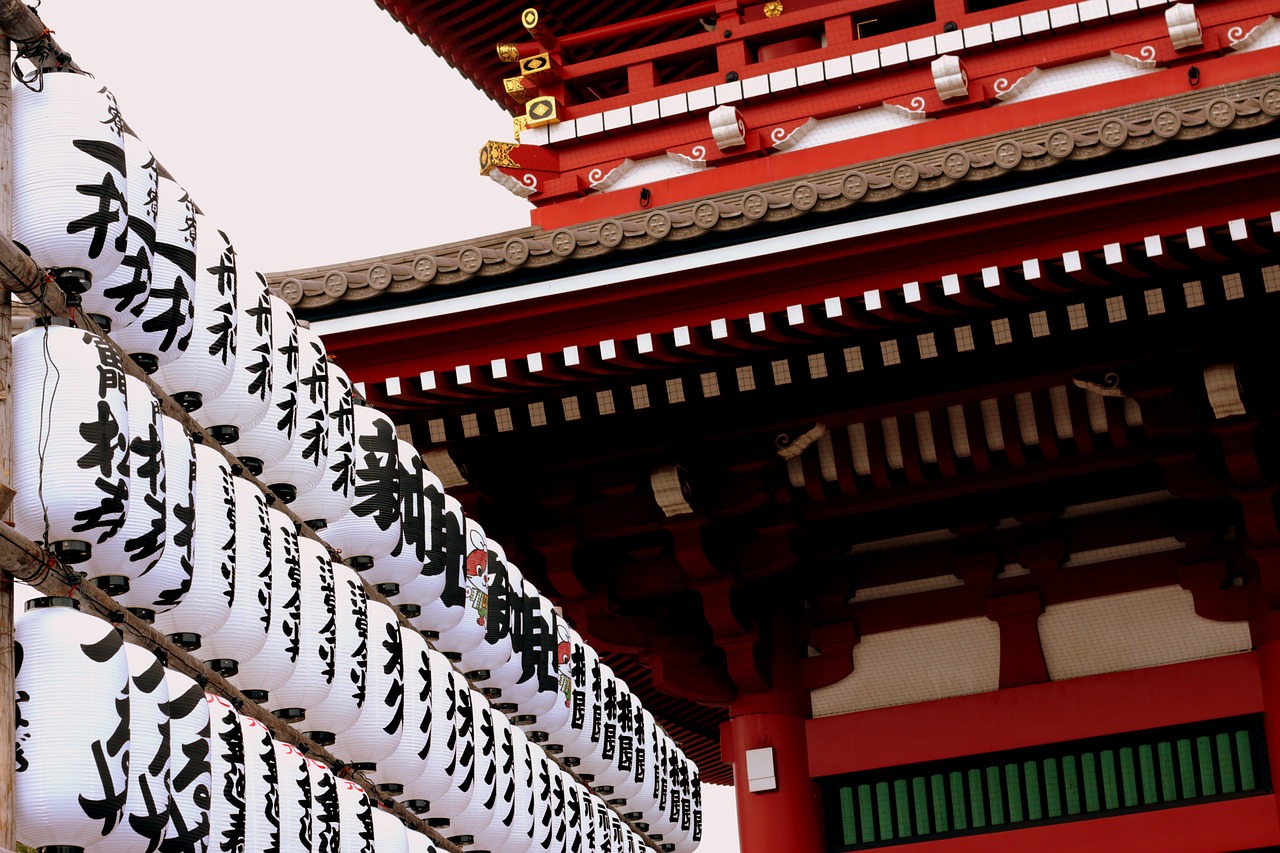
Key Ingredients in Ramen
When it comes to creating a delicious bowl of Japanese ramen, the key ingredients play a crucial role in defining the flavor and experience of this beloved dish. Let's delve into the essential components that come together to make a satisfying bowl of ramen.
First and foremost, the type of noodles used in ramen is a fundamental element. Whether it's thin and firm noodles like Hakata-style ramen or thicker and chewier noodles like those found in Sapporo miso ramen, the texture and shape of the noodles greatly impact the overall mouthfeel of the dish.
Equally important is the broth, which serves as the flavorful base of the ramen. There are various types of broths used in Japanese ramen, each with its own unique characteristics. From the rich and creamy tonkotsu broth made from pork bones to the savory shoyu broth seasoned with soy sauce, the broth sets the foundation for the entire flavor profile.
Additionally, the toppings that adorn a bowl of ramen add layers of flavor and texture to the dish. Popular toppings include tender slices of chashu pork, seasoned soft-boiled eggs, nori seaweed, bamboo shoots, and green onions. These toppings not only enhance the visual appeal of the ramen but also provide a variety of tastes and textures with each bite.
Overall, the harmonious combination of noodles, broth, and toppings is what makes Japanese ramen a culinary delight. Each ingredient plays a vital role in creating a balanced and flavorful bowl of this iconic noodle soup.

Types of Ramen Noodles
When it comes to Japanese ramen, the type of noodle used plays a crucial role in defining the overall experience of this beloved dish. There are various types of ramen noodles, each with its own unique characteristics that contribute to the texture and flavor of the final bowl.
One of the most common types of ramen noodles is the straight and thin variety, known for its delicate texture that pairs well with lighter broths. These noodles are often found in classic ramen styles like shoyu and shio, allowing the broth to shine through without overwhelming the palate.
In contrast, thicker and chewier noodles are favored in heartier ramen styles such as tonkotsu and miso. These robust noodles have a satisfying bite and can hold up well to rich, flavorful broths, creating a more substantial and filling bowl of ramen.
Regional variations also play a role in the types of noodles used, with some areas opting for wavy noodles that trap broth effectively, while others prefer flat noodles that offer a different mouthfeel. The shape and texture of the noodle are carefully chosen to complement the specific broth and toppings of each regional ramen style.
Ultimately, the type of ramen noodle used is a key element in the overall composition of this iconic dish, working in harmony with the broth and toppings to create a harmonious and satisfying culinary experience.

Flavorful Ramen Broths
When it comes to Japanese ramen, the flavorful broths play a crucial role in defining the character of this beloved noodle soup. Each region in Japan boasts its own unique broth varieties, crafted with precision and care to deliver a rich and satisfying taste experience. From the creamy tonkotsu to the clear and delicate shoyu, the diversity of ramen broths reflects the depth of culinary artistry in Japanese cuisine.
The tonkotsu broth, made from simmering pork bones for hours on end, results in a velvety and creamy texture that is packed with umami flavor. This hearty broth is often paired with thin, straight noodles to create a comforting bowl of ramen that warms the soul. In contrast, the shoyu broth, infused with soy sauce and other seasonings, offers a lighter yet equally flavorful option that highlights the simplicity and elegance of traditional Japanese flavors.
For those seeking a more robust and intense taste experience, the miso broth presents a complex blend of fermented soybean paste, creating a deeply savory and slightly tangy profile that pairs beautifully with heartier toppings like braised pork belly or buttered corn. On the other hand, the shio broth, seasoned with salt and other seasonings, delivers a clean and refreshing taste that allows the natural flavors of the ingredients to shine through.
Each ramen broth is a labor of love, simmered to perfection to extract every ounce of flavor from the ingredients. The art of balancing umami, saltiness, sweetness, and richness is a skill that ramen chefs hone over years of practice, resulting in broths that captivate the senses and leave a lasting impression on those who savor them.
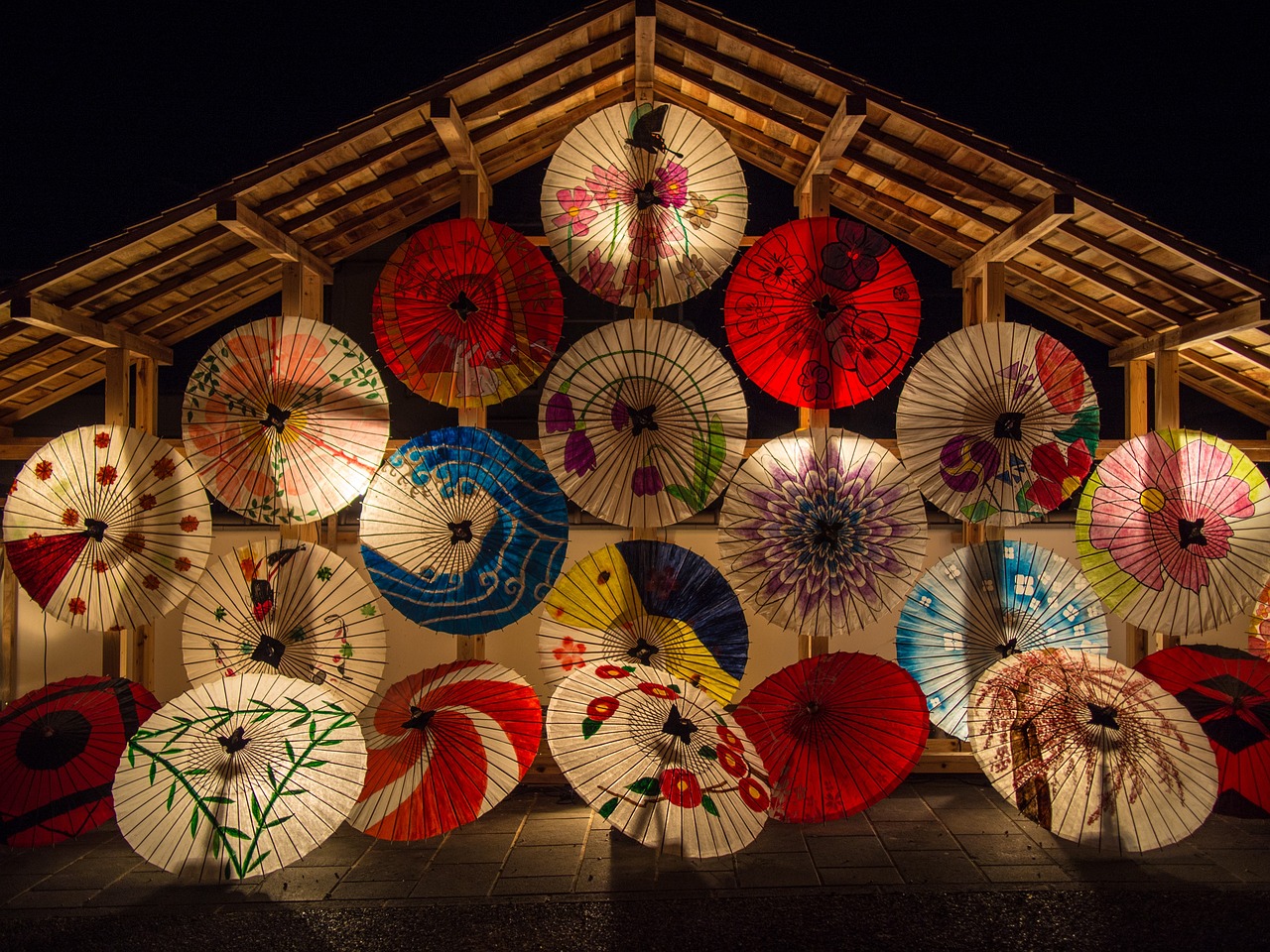
Popular Ramen Toppings
When it comes to enjoying a bowl of Japanese ramen, the toppings play a crucial role in enhancing the overall flavor and texture of the dish. These toppings are carefully selected to complement the rich broth and noodles, creating a harmonious balance of taste. Let's delve into some of the most popular ramen toppings that are beloved by ramen enthusiasts around the world.
One of the most iconic ramen toppings is chashu pork, thinly sliced and tender, adding a savory and melt-in-your-mouth texture to the bowl. This flavorful pork is often marinated and slow-cooked to perfection, infusing the broth with its rich essence.
Seasoned eggs, also known as ajitsuke tamago, are another favorite topping among ramen lovers. These soft-boiled eggs are marinated in a mixture of soy sauce, mirin, and other seasonings, creating a delightful umami flavor that complements the noodles and broth.
Nori seaweed is a common topping that adds a touch of umami and a hint of oceanic freshness to the ramen. These thin sheets of dried seaweed are often placed on top of the noodles, providing a subtle briny flavor that elevates the overall taste experience.
For those who enjoy a bit of crunch in their ramen, crispy fried shallots are a popular choice. These thinly sliced shallots are deep-fried until golden brown, adding a crispy texture and a sweet onion flavor to the dish.
Bamboo shoots, or menma, are another classic ramen topping that adds a unique texture and flavor to the bowl. These tender and slightly crunchy shoots are often marinated in soy sauce and other seasonings, infusing the ramen with a subtle earthy taste.
Lastly, green onions, or negi, are a versatile topping that adds a fresh and aromatic element to the ramen. These thinly sliced onions provide a pop of color and a mild onion flavor, enhancing the overall presentation and taste of the dish.
With these popular ramen toppings, each bite becomes a symphony of flavors and textures, creating a truly satisfying and memorable dining experience.
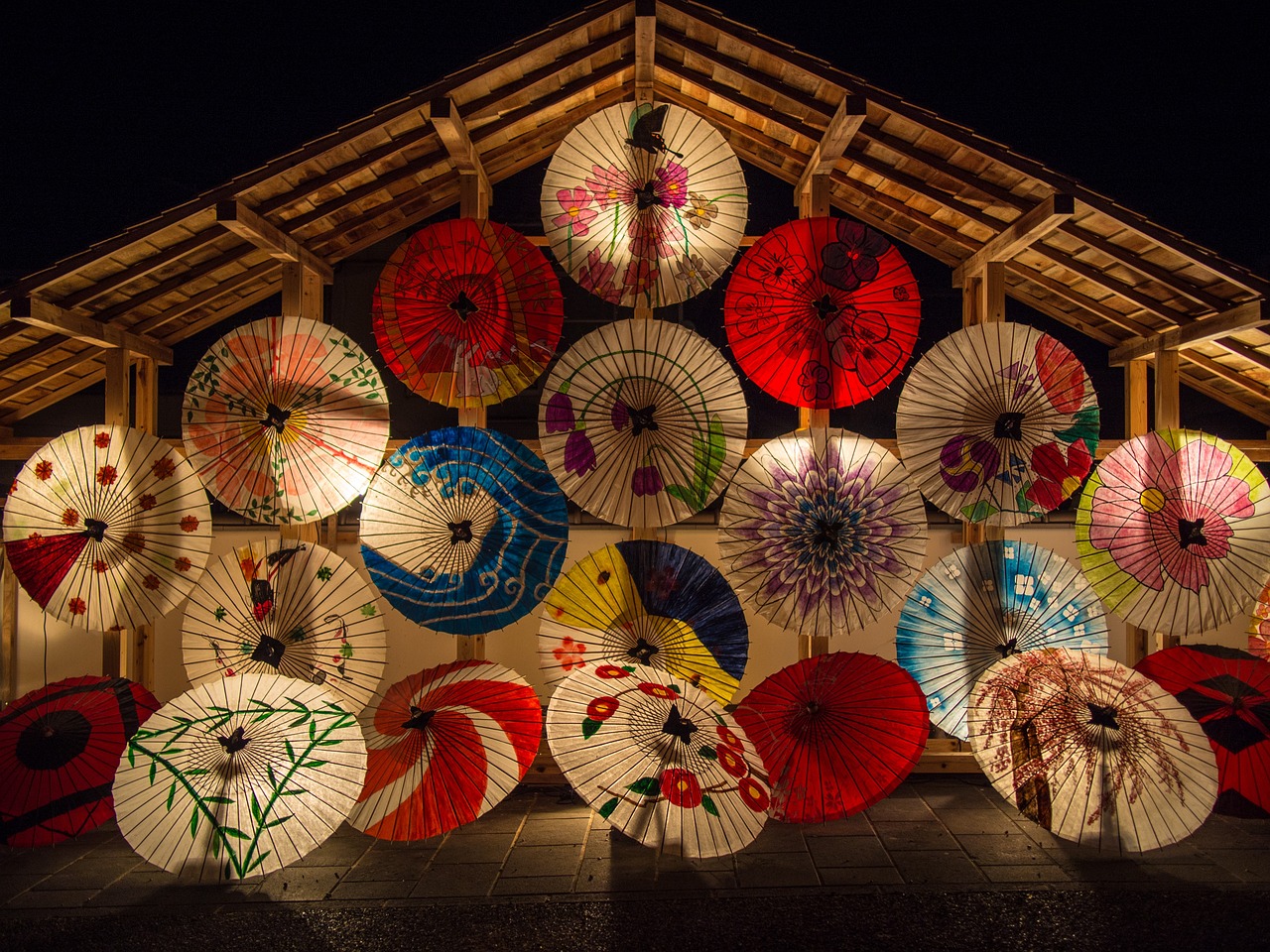
Regional Variations of Ramen
When it comes to regional variations of ramen in Japan, each area boasts its own unique style and flavor profile, reflecting the local culinary preferences and ingredients. From the northern island of Hokkaido to the southern island of Kyushu, let's embark on a gastronomic journey to explore the diverse regional specialties that have captivated ramen enthusiasts worldwide.
In Hokkaido, specifically in Sapporo, miso ramen takes the spotlight with its rich and hearty broth made from fermented soybean paste. This robust and flavorful ramen is often topped with sweetcorn, butter, and slices of tender chashu pork, creating a harmonious blend of savory and sweet notes.
Traveling to Tokyo, you'll encounter the classic Tokyo shoyu ramen, featuring a clear soy sauce-based broth that highlights the umami flavors of bonito fish and kombu seaweed. This elegant and delicate style of ramen is typically garnished with menma (fermented bamboo shoots), green onions, and a perfectly seasoned soft-boiled egg.
Heading west to the bustling city of Osaka, you'll find a unique spin on ramen known as tantanmen. Inspired by Chinese Sichuan cuisine, this spicy and bold ramen is characterized by its fiery chili-infused broth, topped with ground pork, bok choy, and a dollop of fiery chili oil for an extra kick.
Venturing further south to Fukuoka in Kyushu, Hakata tonkotsu ramen reigns supreme with its creamy and pork bone-based broth that simmers for hours to achieve a velvety texture. This rich and indulgent ramen is often served with thin, straight noodles and garnished with pickled ginger, garlic chips, and slices of melt-in-your-mouth chashu pork.
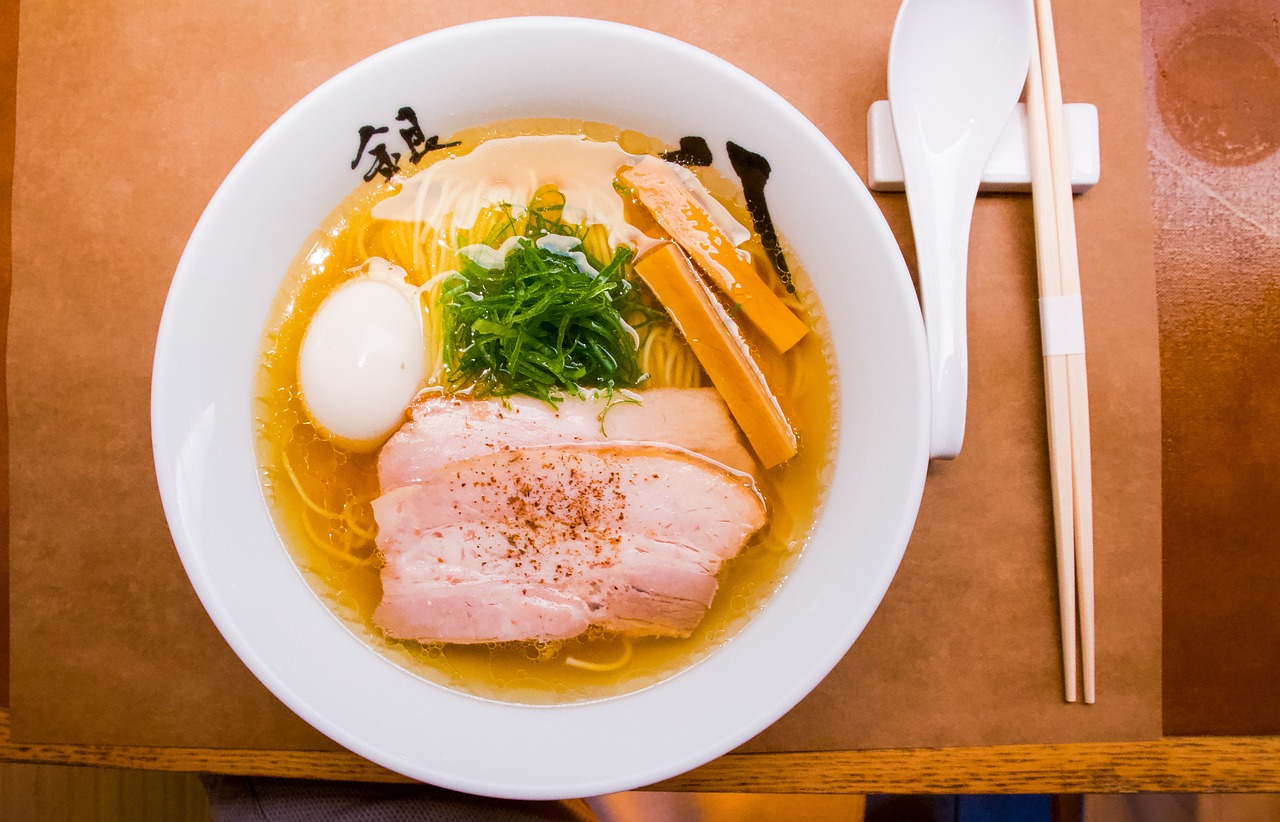
Ramen Etiquette and Traditions
When it comes to enjoying a bowl of Japanese ramen, there are certain etiquette and traditions that are deeply ingrained in the culture. It's not just about slurping noodles; there's a whole ritual surrounding the experience. In Japan, the act of eating ramen is considered a personal and intimate moment, almost like a form of meditation. It's a time to savor each bite and appreciate the craftsmanship that goes into making the dish.
One of the most important rules when eating ramen is to slurp your noodles loudly. While in many cultures slurping may be considered rude, in Japan, it's a sign of appreciation for the chef. The slurping not only cools down the hot noodles but also enhances the flavors by aerating the broth as it enters your mouth. So, don't be shy about making some noise while enjoying your ramen!
Another tradition is to avoid cutting your noodles with a knife or biting them off. Instead, it's customary to eat the noodles whole, using chopsticks to twirl them into manageable bites. This technique not only shows respect for the noodles but also allows you to fully experience the texture and flavor of the dish.
Additionally, when it comes to adding condiments or seasonings to your ramen, it's best to taste the broth first before making any adjustments. The chef has carefully balanced the flavors, so it's polite to try the ramen as it is served before personalizing it to your taste. And remember, each region in Japan may have its own specific customs when it comes to enjoying ramen, so it's always good to be aware of local traditions.

Ramen Culture Beyond Japan
When it comes to ramen, its popularity extends far beyond the borders of Japan. The global appeal of this iconic noodle soup has led to a widespread ramen culture that continues to evolve and innovate in various countries around the world. From the bustling streets of New York City to the vibrant food scenes of London and Sydney, ramen has found a special place in the hearts and stomachs of food enthusiasts everywhere.
One of the fascinating aspects of ramen culture outside of Japan is the diverse range of interpretations and styles that have emerged. While traditional Japanese ramen remains a beloved classic, chefs and food entrepreneurs in different countries have put their own unique spin on this dish, incorporating local ingredients and flavors to create innovative ramen creations.
For example, in the United States, ramen shops have popped up in major cities, offering creative variations such as spicy miso ramen and vegetarian ramen bowls. These adaptations cater to diverse palates and dietary preferences, reflecting the melting pot of culinary influences present in American cuisine.
Similarly, in Europe, ramen has become a trendy and sought-after dish, with restaurants in cities like Paris and Berlin serving up their own interpretations of this Japanese favorite. European ramen often features a fusion of flavors, blending traditional ramen elements with local ingredients to create a harmonious gastronomic experience.
Moreover, the ramen craze has also reached countries in Asia and beyond, with ramen festivals and competitions drawing crowds of ramen aficionados eager to sample unique ramen creations from different cultures. This global exchange of ramen traditions and techniques has contributed to the rich tapestry of ramen culture that exists outside of Japan.
Frequently Asked Questions
- What is the origin of ramen?
Ramen originated in China but has evolved into a beloved Japanese dish with its own unique variations and styles.
- What are the key ingredients in a bowl of ramen?
A typical bowl of ramen consists of noodles, broth, and various toppings such as chashu pork, seasoned eggs, and nori.
- What are the different types of ramen noodles?
Ramen noodles come in various shapes and textures, ranging from thin and firm to thick and chewy, each suited to different regional styles of ramen.
- How is ramen broth prepared?
Ramen broth is made by simmering ingredients like bones, vegetables, and seasonings for hours to extract rich flavors and create a savory base for the soup.
- What are some popular regional variations of ramen?
Japan boasts a diverse range of regional ramen styles, including Sapporo miso ramen, Hakata tonkotsu ramen, and Tokyo shoyu ramen, each with its own unique characteristics.
- Are there any specific etiquette rules when eating ramen?
It is customary to slurp your noodles loudly in Japan as a sign of enjoying the meal, but be mindful of other diners and avoid leaving any food uneaten in your bowl.



